Travel Tales from The Hub
Lofoten Islands, Norway
More Photo Tips | Video Gallery | Photo Gallery | Enewsletter sign-up

By Ken Hubbard
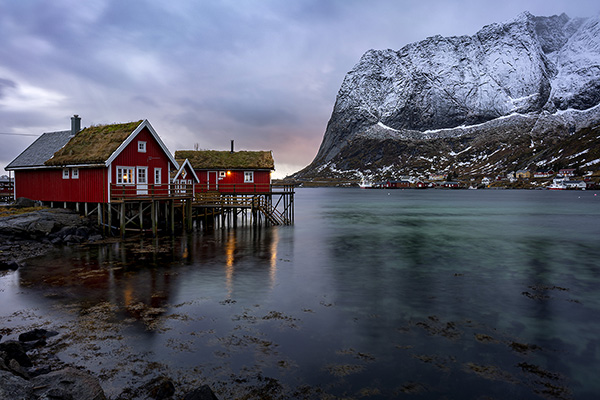
Tamron 24mm f/2.8 Di III OSD M1:2 – f/22, 5 sec, ISO 50 @ 24mm
Click to view larger
When you think about going to the arctic circle you usually start to imagine snow, ice, wind and very cold temperatures. Normally, with most places that fall within this region you would be correct, but the archipelago chain known as the Lofoten Islands in northern Norway are an exception to this rule. Falling entirely within the arctic circle this chain of islands are warmed by the gulf current and have temperatures that range from just below freezing in winter to an average of 55 degrees in summer. Don’t be fooled by these temperatures though, the weather especially in winter, can be very unpredictable with storms that contain high winds, snow, rain and sleet that can last for days.
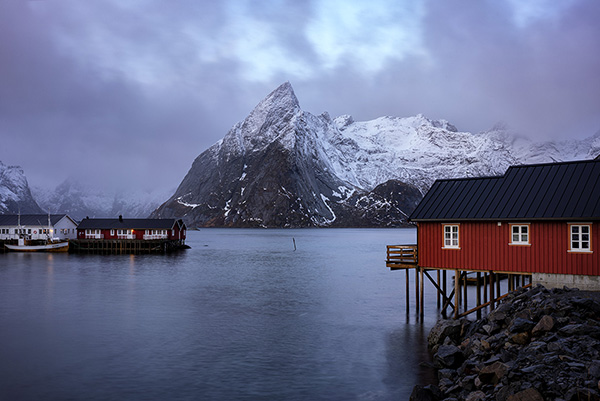
Tamron 35mm f/2.8 Di III OSD M1:2 – f/22, 5 sec, ISO 50 @ 35mm
Click to view larger
The current population of the Islands is about 24,000 people which are spread out along an area that covers approximately 765 square miles. Svolvær is the largest of the cities on the islands but is still very small in comparison to most cities with a population of under 5,000. Most of the population lives in small fishing villages such as Moskenes, Riene and Nusfjord which are dotted amongst the mountains and Fjords. This is the charm of the region, everywhere you travel you feel you have stepped back to a simpler time with friendly people, good food and incredible landscapes. To get around you travel along highway E10 which makes its way from island to island, this roadway is a collection of tunnels and bridges that sometimes defies your imagination. More than once I found myself looking forward and mumbling to myself “we are going there, how?”.
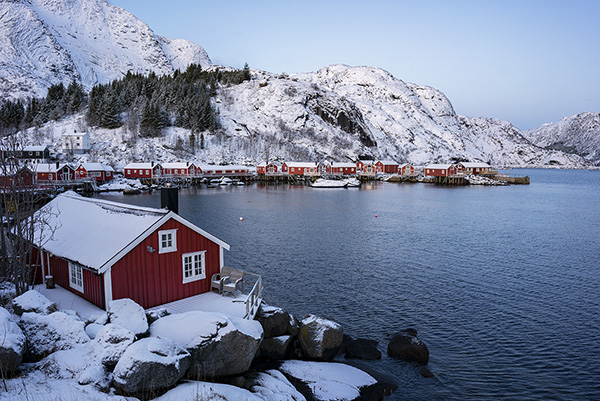
Tamron 24mm f/2.8 Di III OSD M1:2 – f//11, 1/25 sec, ISO 400 @ 24mm
Click to view larger
Even with its seemingly isolated location, there is evidence of human settlements that go back more than 7000 years, with findings of fishing hooks made from bone and horns. More recently though, the Lofoten islands have been continuously inhabited for almost 1000 years by fisherman and farmers. Today many of the small fishing villages are lined with red or yellow fishing huts and processing buildings which date back to the late 1800’s. One of the most well-preserved areas is the village of NusFjord. Located on the south shore of Flakstadøya, along the Vestfjorden. The village was named a UNESCO world heritage site in 1975 and today stands as an open-air museum. As you walk through its streets, you feel the history all around you with its fish oil factory, whaling museum, smoker and old-fashioned country store.
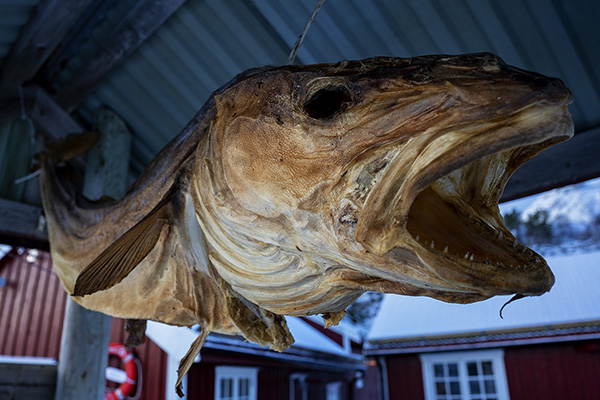
Tamron 24mm f/2.8 Di III OSD M1:2 – f//5.6, 1/50 sec, ISO 400 @ 24mm
Click to view larger
From as far back as the time of the Vikings, fishing has been the main source of work and food for the people of the Lofoten islands. Starting around 1000 AD and still a vibrant part of Norway’s economy today, fishing from February to April is when the islands come alive. The Archipelago is the spawning grounds for the Norwegian Artic Cod or “Skrei” and is the main fish harvested in many parts of this region still today. Stock fish, which is the dried version of the Norwegian Artic Cod is both a source of national pride and Norway’s longest sustainable export commodity and is still made the same way as centuries ago. The fish is hung out to dry on open air timber racks (Which you can see all along highway E10) for around three months. After about three months the fish is moved indoors to mature for up to 1 more full year. There is no salt used, it is dried naturally yielding different tastes each year.
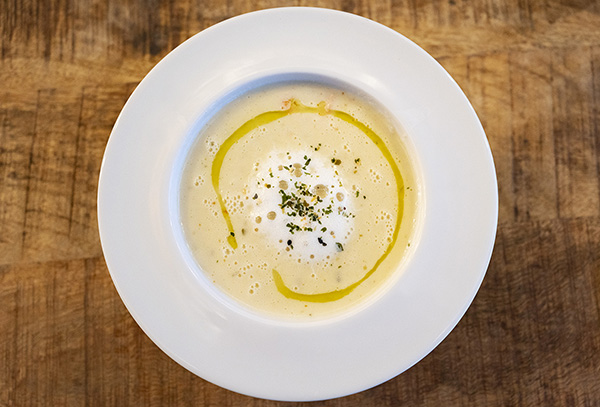
Tamron 35mm f/2.8 Di III OSD M1:2 – f//4.5, 1/60 sec, ISO 3200 @ 35mm
Click to view larger
You may think because the population is small, and you are traveling north of the arctic circle that the food may be limited to the basics, this couldn’t be farther from the truth. Even though Stock fish is what they are known for, there is a lot more to their cuisine than just dried fish. We stopped into Anita’s Seafood (https://sakrisoy.no) on a cold rainy day for a quick bite to eat and what we walked into ended up being an amazing gourmet café. You can find everything from fine packaged goods like smoked salmon and caviar to fresh baked breads and deliciously prepared soups and sandwiches. We ended up going with the homemade fish soup filled with shrimp, salmon and stock fish, I can honestly say it was one of the best soups I have had.
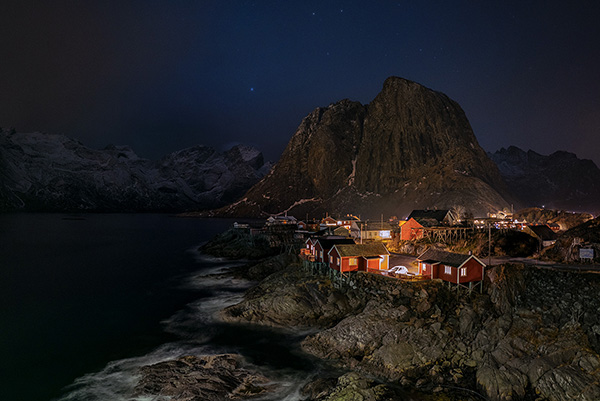
Norway_2: Tamron 20mm f/2.8 Di III OSD M1:2 – f/3.2, 20 sec, ISO 1600 @ 20mm
Click to view larger
There are many places to stay on the islands despite the fact that you will not see any chain hotels, it is all about being part of the culture and staying in the small villages and their beautifully restored fishing huts. The first village we stayed in was Hamnøya and the Eliassen Rorbuer fishing huts (https://rorbuer.no). These are not your grandfathers fishing huts, they are fully restored buildings with all the modern amenities you can ask for, all with the amazing views of the beautiful landscape right out your front door. This was a perfect location to drive up and down the Lofoten coast, almost all the locations we wanted to go were within an hour drive. Most have fully equipped kitchens as well, so if you don’t feel like eating out you can buy some local fish and produce and cook up a great meal at home as well.
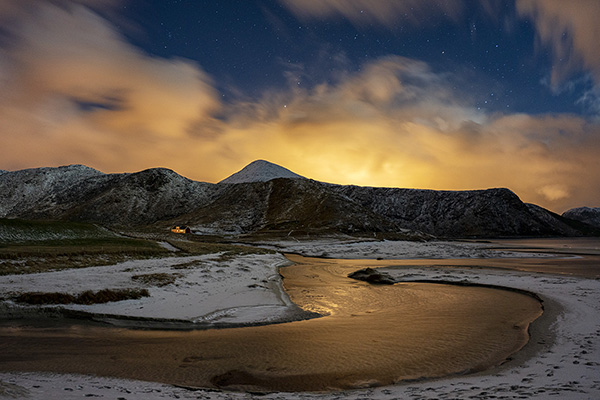
Tamron 20mm f/2.8 Di III OSD M1:2 – f/6.3, 25 sec, ISO 1600 @ 20mm
Click to view larger
Lenses used for this article:
Tamron 20mm f/2.8 Di III OSD M1:2
Tamron 24mm f/2.8 Di III OSD M1:2
Tamron 35mm f/2.8 Di III OSD M1:2
More Photo Tips | Watch Videos | Learn More About Tamron Lenses | Photo Gallery